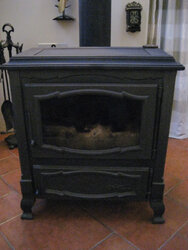Here's a short video of the modifications I made to our Morso Squirrel stove.
It's the USA EPA model with the primary air control welded shut, which obviously made that the first mod on the to do list. With the control open, you can light the fire immediately close the door and it starts right up.
The mods are:
1. Make primary air control operational
2. Add Morso cast iron coal firebox liners
3. Make cast iron ring level with top surface so pots and pans don't rock.
It's the USA EPA model with the primary air control welded shut, which obviously made that the first mod on the to do list. With the control open, you can light the fire immediately close the door and it starts right up.
The mods are:
1. Make primary air control operational
2. Add Morso cast iron coal firebox liners
3. Make cast iron ring level with top surface so pots and pans don't rock.






